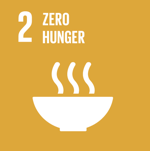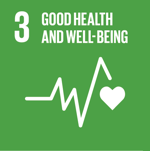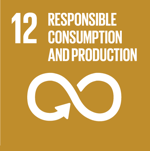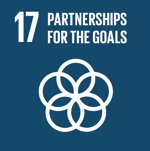Sustainable control of vector of HLB in Family Farming
 Argentina
Argentina
 Bolivia
Bolivia
 Paraguay
Paraguay
 Uruguay
Uruguay
Executive Summary
HLB (Huanglongbing) is the most destructive citrus disease in the world, caused by a bacterium (Candidatus Liberibacter spp). The disease dispersal dynamics respond to the transfer of diseased plant material and the presence of the vector (Diaphorina citri) as a dissemination agent. Since there is no cure yet, prevention is based on the use of healthy material, constant monitoring of crops and vector insects, vector control and early identification of the infected plant and its elimination.
In 2012 the disease was first detected in Argentina and then in Paraguay in 2013. In Uruguay and Bolivia there is still no record of the disease, but the vector is present. The platform's current research and development institutions promote the implementation of integrated pest and disease management (IPM); however, calendar-driven pest and disease control continues to prevail through routine applications of non-selective agrochemicals that generate risks and cause damage to the environment, the beneficial entomofauna, farmers and workers, producer families and the general population.
The proposal aims to adapt, disseminate and raise awareness of IPM technology in the control of the citrus HLB vector in family agriculture (FA).
The project is organized into four components:
- Control of the HLB vector in a context of local adaptation of integrated management, through the installation of 17 demonstration (DL) and conventional (CL) lots in family producer establishments;
- Training farmers and other technicians (including training of new certified monitors), communication and raising social awareness;
- Monitoring of sustainability, quality and economic analysis in DL and CL; and
- Collective management of innovation.
The technological solution
- Locally adapt integrated pest management (IPM) technology in citrus family farming, focusing on the control of the HLB vector by applying methodical monitoring practices, using safe products preserving the natural balance and use of biologicals.
- Train and teach family producers, professionals and other actors in the citrus sector about HLB, its vector and natural enemies. Implement new local innovation networks.
- Monitor impact on sustainability, fruit quality and economic outcomes among FA adopting IPM techniques in order to contribute to innovation processes at all levels.
Results
Significant decrease in the progress of the HLB disease and its vector insect among target populations involved in the platforms activities, which in its primary stage accounts for almost 226 thousand hectares with citrus production and more than 6,000 family farmers.
17 standardized and published- protocols for HLB and its vector control and other pests and diseases with IPM technology in FA, as a result of the implementation of demonstration lots in establishments of family producers within the platform.
4,000 producers and their families and other actors involved in the citrus sector -professionals, operators, among others- strengthened in their capacities in IPM technology with focus on HLB and its vector control.
Social environment communicated and made aware of the HLB problem, its consequences and the appropriate approach.
Innovation network implemented through scaling devices (participatory workshops, field demonstrations, etc.).
Beneficiaries
Direct beneficiaries are 3000 family farmers which produce citrus fruits, many organizations (cooperatives, consortia and associations), 250 professionals and 200 trained monitors, 200 agro-technical school students, residents of 20 municipalities in Argentina, Uruguay, Paraguay and Bolivia.
Indirect beneficiaries are 3,000 family producers, the citrus sector as a whole and consumers in the four countries. It is also expected to contribute to productivity enhancements among target population which comprises more than 220 thousand ha of citrus production and prevent losses that other countries in America and other continents have suffered and/or are currently suffering since discovey of the disease.
Sustainable Development Goals






Project news
Participating Organizations
Executor
- Fundación ArgenINTA (ARGENINTA) - Argentina
Co-executor
- Instituto Nacional de Investigación Agropecuaria (INIA) - Uruguay
- Instituto Nacional de Tecnología Agropecuaria (INTA) - Argentina
- Gobierno Autónomo Municipal de Bermejo (GAM Bermejo) - Bolivia
- Universidad Nacional de Itapúa (UNI Paraguay) - Paraguay
Associated
- Federación Argentina del Citrus (FEDERCITRUS) - Argentina
- Unión de Productores y Exportadores Frutihortícolas del Uruguay (UPEFRUY) - Uruguay
- Servicio Nacional de Sanidad y Calidad Agroalimentaria (SENASA) - Argentina





